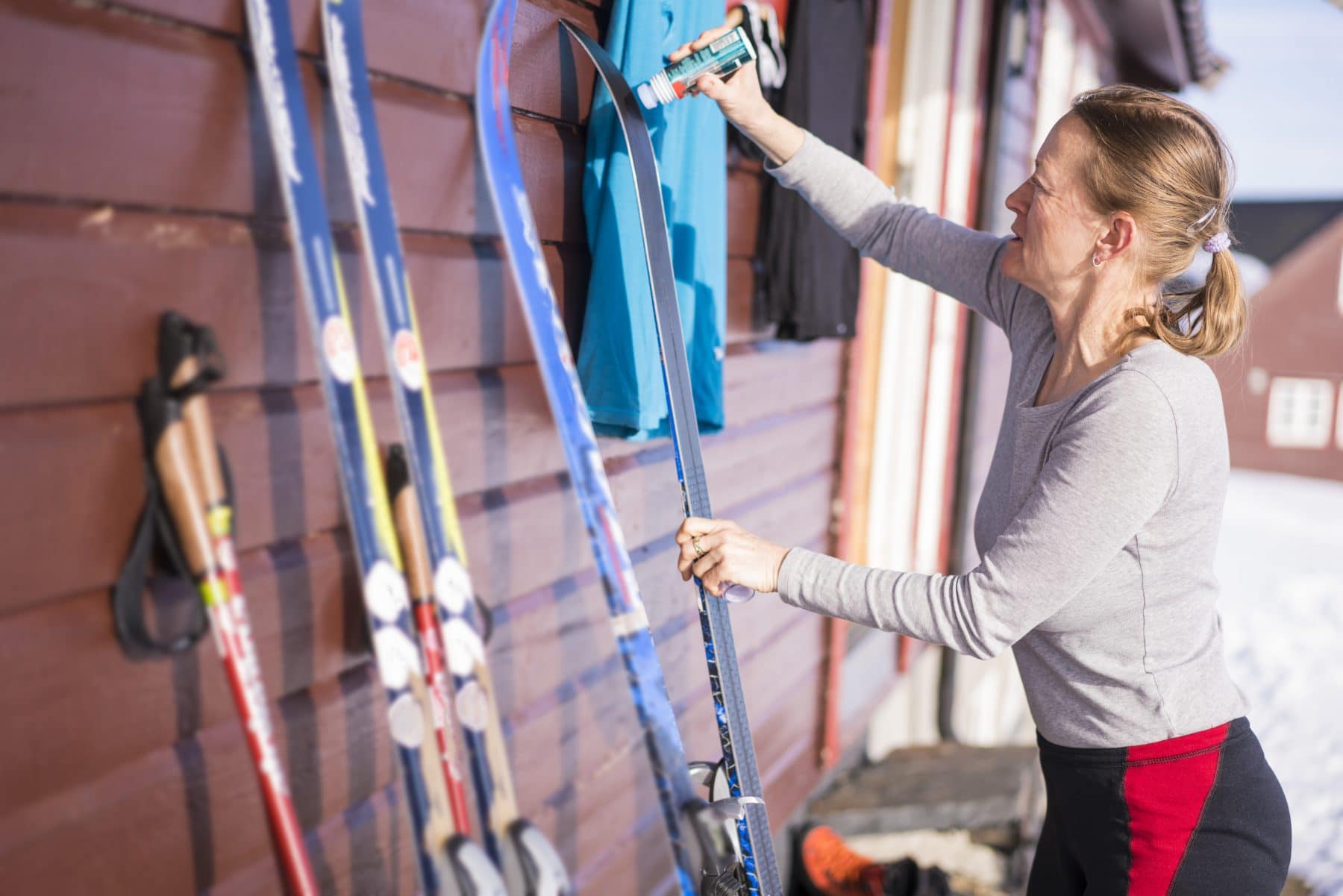
For many, waxing the skis and its imagined difficulty is the reason for not to ski. Basically, a wrong reason. Waxing is simple and easy to learn. But if you want to avoid it partially or completely you can find good alternatives. Easy shortcuts like wax-free skis or easy-to-use waxes.
Classic skis need grip and glide waxing, skating skis glide waxing only. The function of waxes is based on simple physics. The grip happens when snow crystals adhere to the wax for a moment, and gliding when the snow is heated by the friction of ski to form a microscopic-thin layer of water over which the ski glides.
Kick waxing
Classic style skis have a kick zone in the middle of ski. It is waxed with hard kick wax for below-zero Celsius temperatures, or for warmer conditions with a klister wax.
Hard wax is applied in 3-5 thin layers throughout the holding area, and then corked flat with a synthetic cork. With klister, apply 5-7 drops on both sides of the ski and level it with your thumb. The klister needs to harden outdoors before skiing.
The beginner needs only two hard waxes. One made for temperature range 0 to – 2 degrees Celsius to be used for up to 10 degrees below zero and another one or colder weathers, for -5 to -10 degrees. In general, it is best to choose a wax made for a warmer weather than the true outside temperature. The silver gray universal klister is the only klister the beginner needs.
There are also easy-to-use options for kick waxes. Sprays are the best.
Glide waxing
For glide waxing, you can use paraffin waxes or easy-to-use liquids.
The paraffin wax is melted with wax iron to the bottom of the ski. Wax manufacturers provide clear instructions for this on both sales packaging and on their website. After melting, the excess wax is scraped and brushed off from the ski bottom surface.
If you don’t want to do hot waxing or do not have the right space for it, you can use liquid waxes. They have seen rapid development in recent years. The wax liquid is spread with a sponge from a bottle, allowed to dry for a moment – and the skis are ready for skiing.
A good alternative is a glide tape that can be attached to the skis even with an ordinary flat iron without the need for special tools. You will find clear instructions for this on the packaging.
It is good to wax your skis once a season with paraffin. It protects the skis and extends their life. If you don’t want to do it yourself, let your local ski dealer do it in the beginning or at the end of the season.
Clean off old waxes
Old waxes are removed from the kick zone with a wax remover and from the glide surfaces with a so-called “clean and glide” liquid. Put a drop of it on a sheet of paper and sweep the base clean. Usually the old kick wax needs to be scraped off after that. It is advisable to roughen the kick zone lightly with sandpaper no. 100 grit, the wax will then stick better.
Just a “clean and glide” swipe with soft paper is enough for the glide area. If there is dirt on the paper, wipe the bottom again.
Take care of your wax-free skis
There are a number of wax-free versions of classic style skis. In real life, most of them need to be waxed and all of them at least cleaned. The best in wax-frees are skin-skis with synthetic mohair and Nano skis with a special coating.
Mohair on skin-skis should be cleaned regularly. Use cleaning agents made for this purpose as too strong liquids can dissolve the adhesive with which the hair is attached. The cleaning job itself is easy: wipe a few times with paper moistened with cleaning liquid.
Glide wax your skin-skis in the normal way.
The entire base of the Nano skis can be cleaned with a regular wax remover. A couple of sweeps with a paper are usually enough. Really dirty skis can be cleaned by washing them with a wax remover using a coarse kitchen sponge.
Faulty liquids must not be used for the maintenance of the nano coating. Unfortunately, there are products for sale that actually spoil the ski bottoms. It is advisable to carefully read the manufacturer’s instructions that come with the skis. There is a list of conditioners that can be safely used.
Check out also the previous article if you missed it!
Axa Sorjanen – Educated skiing instructor, award winning Finnish journalist, writer and documentarist
Tip: If you need support with the app please contact our customer service.
Classical skiing technique - Sports Tracker Blog
[…] Check out also the previous article if you missed it! […]